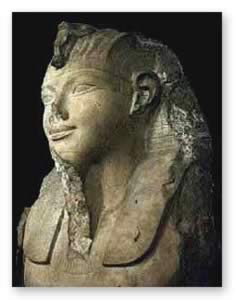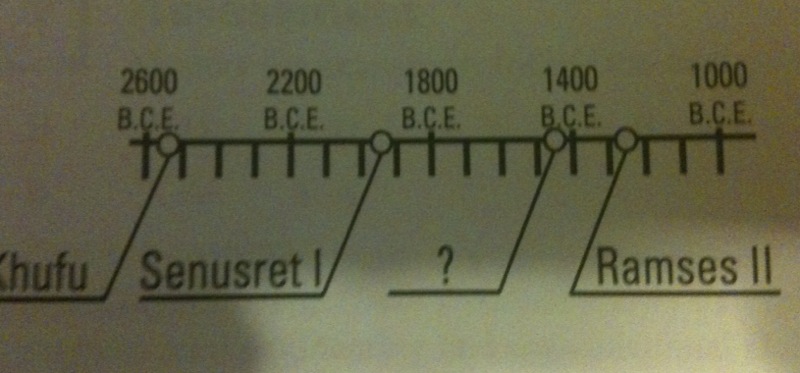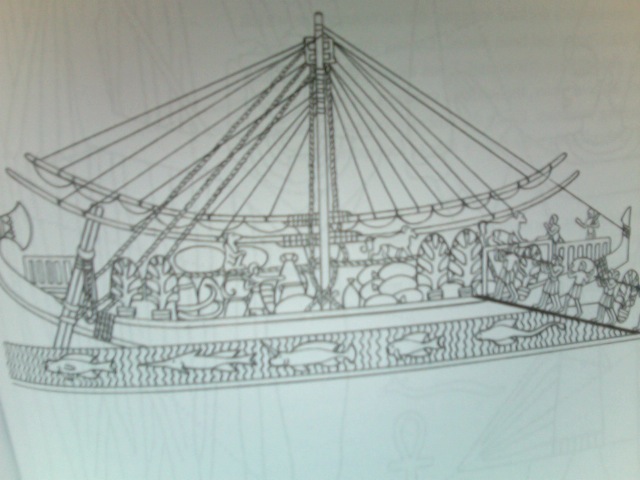Ancient Egyptian History Quiz About 8th Grade Student

Ancient Egyptian pharaohs were considered to be both divine deities as well as mortal rulers. Throughout the 30+ dynasties in ancient Egyptian history, it is speculated that some 170 or more rulers reigned over the great land of Egypt during a three thousand year time span.
- 1.
What is one characteristic that Egypt's Middle Kingdom is famous for?
- A.
The Great Pyramid at Giza
- B.
Reunification
- C.
Pharaohs
- D.
The war against the hittites
Correct Answer
B. ReunificationExplanation
The Middle Kingdom of Egypt is famous for reunification. This period in ancient Egyptian history, which lasted from around 2055 BC to 1650 BC, saw the country reunified after a period of political fragmentation known as the First Intermediate Period. The pharaohs of the Middle Kingdom worked to restore centralized control and stability, bringing together Upper and Lower Egypt under a single rule. This reunification allowed for economic prosperity, cultural development, and the construction of impressive architectural projects, such as temples and tombs.Rate this question:
-
- 2.
When Khufu wanted to be sure his power would be accepted, he
- A.
Killed his competitors
- B.
Fathered many children
- C.
Traded with other peoples
- D.
Said he was a god
Correct Answer
D. Said he was a godExplanation
Khufu wanted to ensure his power would be accepted, so he claimed to be a god. By declaring himself as a deity, he aimed to solidify his authority and establish himself as the supreme ruler. This tactic was commonly used by ancient Egyptian pharaohs to legitimize their rule and maintain control over their subjects.Rate this question:
-
- 3.
What was the most important architectural achievement of Senusret's reign?
- A.
The reunification of Egypt
- B.
The increase of trade
- C.
The creation of beautiful jewelry
- D.
The building of the white chapel
Correct Answer
D. The building of the white chapelExplanation
During Senusret's reign, the most important architectural achievement was the construction of the white chapel. This architectural masterpiece showcased the advanced skills and techniques of the ancient Egyptians. The white chapel was a symbol of the pharaoh's power and authority, serving as a religious and ceremonial center. Its construction demonstrated Senusret's dedication to the gods and his desire to create a lasting legacy. The white chapel also played a significant role in the religious rituals and ceremonies of the time, further solidifying its importance in Senusret's reign.Rate this question:
-
- 4.
Which pharaoh ruled during the years identified by the blank space?
- A.
Cheops
- B.
Hatshepsut
- C.
Ramses I
- D.
Tutankhamen
Correct Answer
B. HatshepsutExplanation
Hatshepsut ruled during the years identified by the blank space. She was one of the few female pharaohs in ancient Egypt and reigned from 1478 to 1458 BC. Hatshepsut is known for her successful reign, during which she focused on trade, building projects, and establishing Egypt as a prosperous and powerful nation. She is also remembered for her unique portrayal as a male pharaoh, often depicted with a false beard and male clothing in statues and reliefs.Rate this question:
-
- 5.
Which of the following pharaohs ruled before the other three?
- A.
Hatshepsut
- B.
Khufu
- C.
Ramses II
- D.
Senusret I
Correct Answer
B. KhufuExplanation
Khufu ruled before the other three pharaohs mentioned in the question. Hatshepsut, Ramses II, and Senusret I all ruled during different periods in ancient Egyptian history, but Khufu, also known as Cheops, was the pharaoh who ruled during the Old Kingdom, specifically during the 4th Dynasty. He is most famous for commissioning the construction of the Great Pyramid of Giza, one of the Seven Wonders of the Ancient World.Rate this question:
-
- 6.
Of the events listed below, which was the last to happen?
- A.
The White CHapel was built.
- B.
Ramses II made peace with the Hittites.
- C.
The Great Pyramid at Giza was built.
- D.
Hatshepsut promoted trade with Punt.
Correct Answer
B. Ramses II made peace with the Hittites.Explanation
Ramses II making peace with the Hittites was the last event to happen among the listed options. This can be inferred from the chronological order of the events mentioned. The Great Pyramid at Giza was built before Ramses II's reign, and Hatshepsut's promotion of trade with Punt also occurred before Ramses II's peace agreement. The construction of the White Chapel is not specifically dated, but it is believed to have been built during the reign of Senusret I, which predates Ramses II. Therefore, Ramses II making peace with the Hittites is the most recent event among the given options.Rate this question:
-
- 7.
Based on what is happening in this picture, under which pharaoh did it most likely take place?
- A.
Hatshepsut
- B.
Khufu
- C.
Ramses II
- D.
Senusret I
Correct Answer
A. HatshepsutExplanation
Based on the given picture, the pharaoh depicted is wearing a traditional female headdress, which suggests that the pharaoh is a woman. Among the options provided, only Hatshepsut was a female pharaoh. Therefore, based on the visual clues, it is most likely that the picture represents a scene from the reign of Hatshepsut.Rate this question:
-
- 8.
It was built as a tomb for more than 2million stone blocks. What was it?
- A.
The Great Pyramid at Giza
- B.
The Sphinx
- C.
The White Chapel
- D.
The temple at Abu Simbel
Correct Answer
A. The Great Pyramid at GizaExplanation
The Great Pyramid at Giza is the correct answer because it was built as a tomb and consists of more than 2 million stone blocks. The Great Pyramid is one of the most iconic and largest pyramids in Egypt, built as a burial place for the pharaoh Khufu. Its construction required an immense amount of manpower and resources, showcasing the impressive engineering skills of the ancient Egyptians.Rate this question:
-
- 9.
What is one characteristic that Egypt's Middle Kingdom is famous for?
- A.
The Pharaoh's temple
- B.
The great Ziggurat of Ramses II
- C.
The great hanging gardens of Egypt
- D.
The great pyramid of Giza
- E.
Reunification
Correct Answer
E. ReunificationExplanation
The Middle Kingdom of Egypt is famous for reunification. This refers to the period in ancient Egyptian history when the country was brought back together under a single ruler after a period of political fragmentation known as the First Intermediate Period. The reunification of Egypt during the Middle Kingdom led to a period of stability and prosperity, with the central government asserting its control over the entire country once again. This period also saw advancements in art, architecture, and literature, making it a significant era in Egyptian history.Rate this question:
-
- 10.
Egyptians believed that preserving the bodies of the dead was necessary...
- A.
In order to have a famous pyramid.
- B.
For the afterlife.
- C.
To be remembered as a great Pharaoh.
- D.
In order to go to heaven.
Correct Answer
B. For the afterlife.Explanation
The Egyptians believed that preserving the bodies of the dead was necessary for the afterlife. They believed that the soul would need the body in order to continue living in the afterlife, and therefore, they developed elaborate mummification techniques to preserve the bodies. They also believed that the body needed to be intact and well-preserved in order to ensure a successful transition into the afterlife. This belief in the importance of the afterlife and the preservation of the body is evident in the construction of elaborate tombs and pyramids, where the bodies of pharaohs and other important individuals were laid to rest.Rate this question:
-
Quiz Review Timeline +
Our quizzes are rigorously reviewed, monitored and continuously updated by our expert board to maintain accuracy, relevance, and timeliness.
-
Current Version
-
Oct 24, 2024Quiz Edited by
ProProfs Editorial Team -
Feb 06, 2010Quiz Created by
Jdarauz




